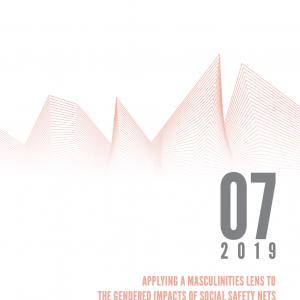Social protection systems are highlighted in the UN’s Agenda 2030 for Sustainable Development as an important tool to reduce poverty. Different forms of social safety net programs (SSNs), like cash transfers, in-kind food aid or public work programs are rapidly becoming cornerstones in many national poverty reduction strategies and international development programs. In-depth gender-relational analysis has not typically been part of social protection system design. However, a gender transformative approach, including a focus on masculinities, would increase the understanding of underlying intrahousehold dynamics. These dynamics influence program outcomes and a gender transformative approach could possibly have a positive impact towards equality. This literature review looks at how SSNs better can integrate a gender-relational lens, including an analysis of masculinities and power dynamics, with the aim of making them more effective and sustainable.
Funded by the Expert Group for Aid Studies (EBA), this paper is targeted towards informing Sweden’s international development assistance policy and aid delivery, but may also be relevant to other stakeholders, including UN agencies, other bilateral aid agencies, and civil society organizations.
Read some of the key findings here.
Resources
English
Applying a Masculinities Lens to the Gendered Impacts of Social Safety Nets
PDF Preview
